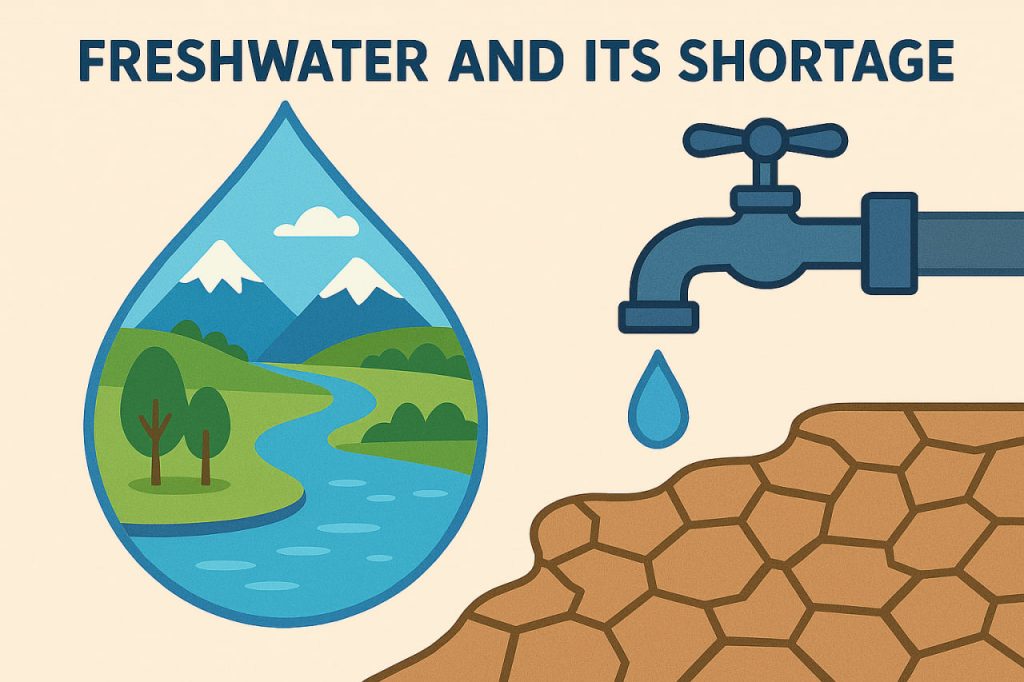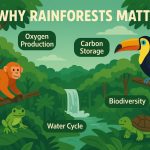Freshwater is essential for all known forms of life. It makes up only about 2.5% of all water on Earth, and just a fraction of that is accessible for human use. As the global population grows and climate patterns shift, the shortage of freshwater is becoming one of the most critical challenges of the 21st century.
Sources of Freshwater
Freshwater comes from several natural sources, including rivers, lakes, glaciers, and underground aquifers. Most of the world’s accessible freshwater is stored underground, while surface waters account for a small percentage. However, pollution, overuse, and poor management have degraded many of these sources, reducing the amount of clean, usable water.
Main Causes of Freshwater Scarcity
The causes of freshwater shortages are varied and often interconnected. Overconsumption in agriculture and industry, especially in water-intensive sectors, is a major factor. Climate change has also altered precipitation patterns, causing droughts in some regions and floods in others. Rapid urbanization increases demand, while pollution from sewage, chemicals, and plastic waste further contaminates water supplies.
Consequences for People and the Planet
The effects of freshwater scarcity are severe. In many regions, people must walk long distances to find clean drinking water. Water scarcity affects food production, leading to malnutrition and poverty. Ecosystems that rely on freshwater—such as wetlands and rivers—are also at risk, which can cause loss of biodiversity and imbalance in local climates.
Global Hotspots of Water Stress
Some regions already experience high levels of water stress. These include parts of the Middle East, North Africa, India, and southwestern United States. In such areas, demand exceeds supply for much of the year. As temperatures rise and populations increase, more areas are expected to face similar conditions.
Strategies for Solving the Crisis
To address this crisis, governments and communities must adopt both short-term and long-term solutions. These include investing in water-efficient farming, repairing leaky infrastructure, protecting wetlands, and promoting water recycling. Desalination technology can also help, though it remains expensive and energy-intensive. Public awareness and education are essential in encouraging conservation habits at all levels.
The Role of Individuals
Everyone can contribute to protecting freshwater resources. Small changes, such as fixing household leaks, using water-saving appliances, and avoiding the overuse of bottled water, make a difference. Supporting local and global efforts to protect freshwater ecosystems is also critical for long-term sustainability.
Glossary
- Freshwater – Water with low salt content, suitable for human use and agriculture.
- Shortage – A situation where demand exceeds available supply.
- Climate change – Long-term changes in temperature and weather patterns, often caused by human activities.
- Malnutrition – A condition that results from eating a diet lacking in nutrients.
- Water stress – The condition where water availability is insufficient to meet demand.
- Conservation – The careful use and management of natural resources.


